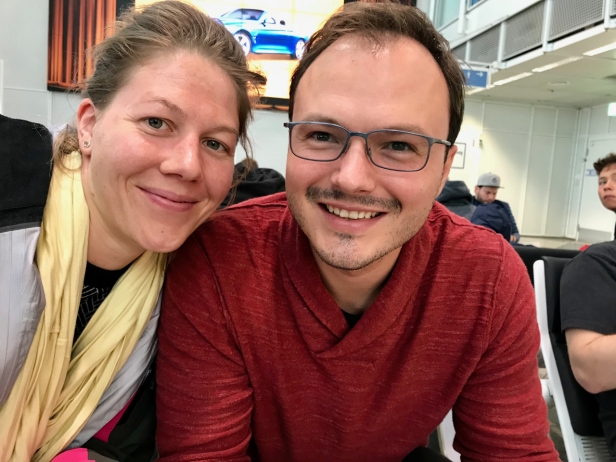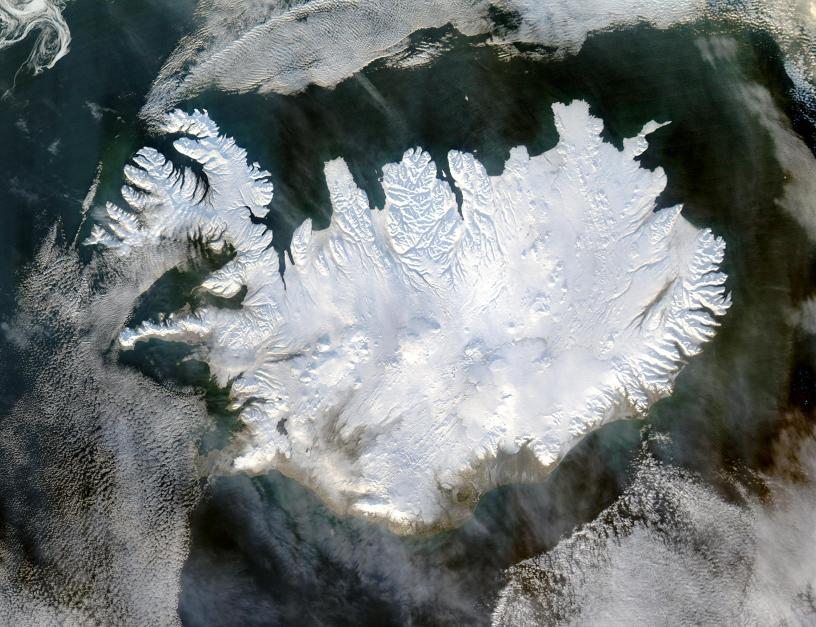After Fontainebleau, our next stop (and the first “real” leg of our journey after France) was Iceland. We barely had 48 hours in Munich to unpack all the stuff from Fontainebleau and finish packing our two backpacks for the final departure from Munich. All went well and we caught our flight to Reykjavik easily.

To get around the island, we booked a 4×4 Jeep that we also use as our sleeping quarters. We met quite a few other visitors to Iceland with either their colourful “Happy Campers” or small economical rental cars – it is fairly easy and enables you to see more remote areas of the island and pretty much go wherever you want. One Spanish couple gave us a ride back to our car after our hike along the glacier lakes.
Nature and national parks
For us, visiting Iceland is all about experiencing its nature and national parks. The whole island is about 1.5x the size of Bavaria but only has about 330.000 inhabitants. Most of the time you find yourself in most remote areas. Any little village with more than 10 houses feels like you’re entering a major residential or commercial centre 🙂
We were really lucky with nice and stable weather and went on three all-day trips which we really enjoyed: a three-lakes-hike around the glacier lagoons in the south-west, hiking up Mount Skúmhöttur more in the east, and climbing Mount Súlur in the north. The trips were great! There was nobody else around at those mountains (except a group of wild bird hunters once). Many of the tracks were unmarked or covered with snow, requiring us to plan our own route of ascent. On Mount Skúmhöttur, the summit book recorded the last ascent about 4 weeks prior to ours – it seems off-season in Iceland is really off-season 🙂
Icelandic history
Iceland has very detailed records of its settlement history and the first individuals who populated the island. Ever since the Scandinavian settlers arrived as permanent residents of the island, the individuals living on the island were all recorded. Everyone in Iceland is related to the original settlers and the entire family tree of the population living is Iceland is available online as a public record, dating back to 874 AD. Much of Icelandic history is recorded in the form of Sagas – stories about the deeds of the forefathers of the nation. We visited the Settlement Center in Borgarnes to learn more about the settlement period and learn about one of the sagas taking place in the north-western part of Iceland.
Our daily travel records so far
Day 1: arrival at Keflavik airport, picking up the car and driving to Selfoss
Day 2: Selfoss -> Geysir -> Gullfoss waterfall -> Flúdir (only mushroom farm in Iceland with fantastic food!) -> Skógafoss waterfall -> Solheimasandur Plane Wreck -> Northern lights -> somewhere south of Skaftafell national park (it was a full day :-))
Day 3: -> Breakfast at Jökulsárlón lagoon, from there day hike across three glacial lagoons to finish at Fjallsárlón lagoon from where we hitch-hiked back to the start -> Djúpivogur -> Thingmúli
Day 4: -> hike up Mt. Skúmhöttur -> Egilsstadir -> Seydisfjördur -> Eglisstadir
Day 5: -> rest day, visiting Dettifoss waterfall -> Krafla power plant -> Myvátn lake -> Akureyri (fourth biggest town in Iceland)
Day 6: -> hike up Mt. Súlur -> Blönduos
Day 7: -> Hvítserkur rock formation (resembles a rhino) -> Laugar í Sælingsdal hot spring -> Borgarnes with settlement museum
Day 8: -> rest day in Borgarnes and Akranes
Day 9-11: -> visiting the Secret Lagoon, Reykjavik and one of Anna’s family friends there – and still trying to put up the slackline which is hard given lack of trees and cold feet 🙂
We leave Iceland on Thursday to travel to Bogotá (via the US) – it’ll be a long journey with two stops (in Washington and Florida)…















Sounds like a well planned out trip! Beautiful place to visit!
LikeLike